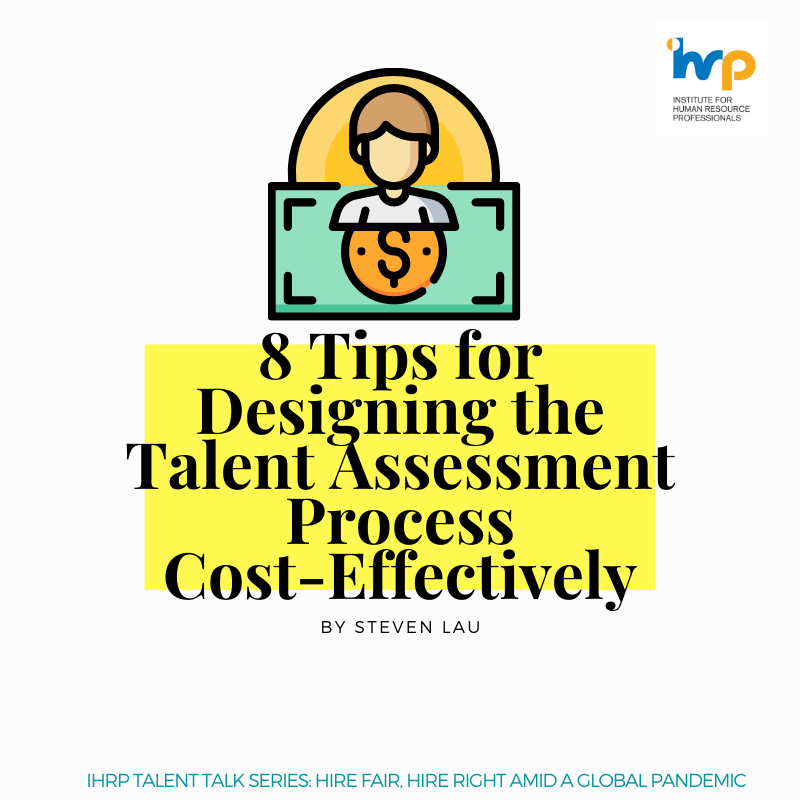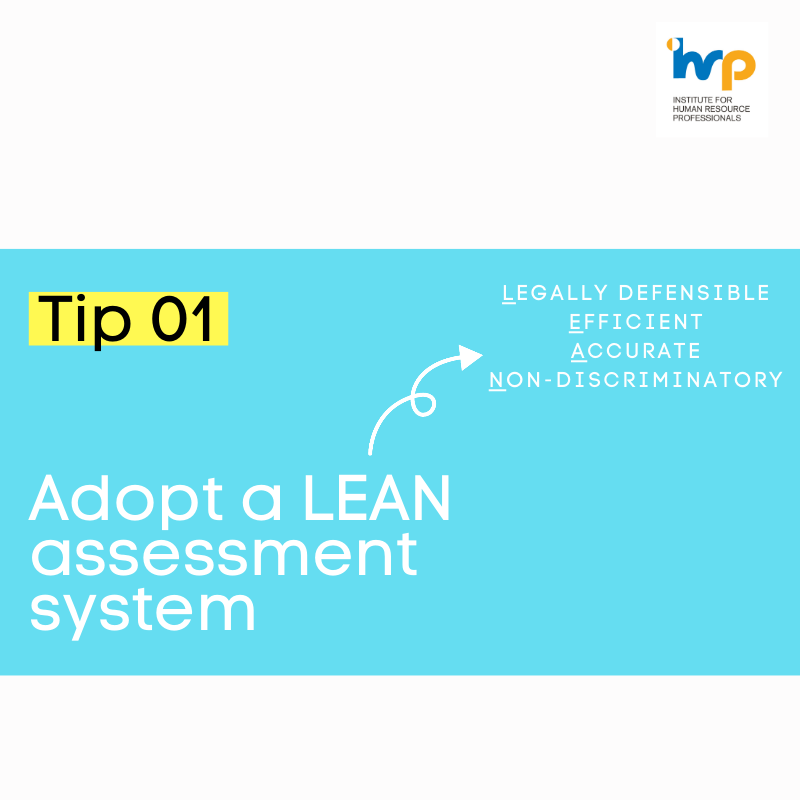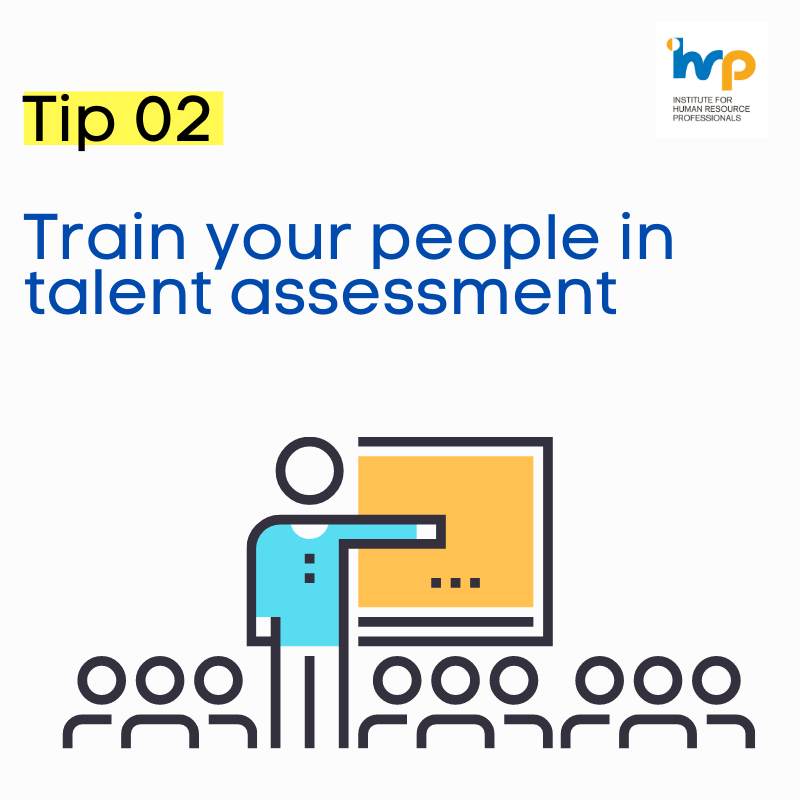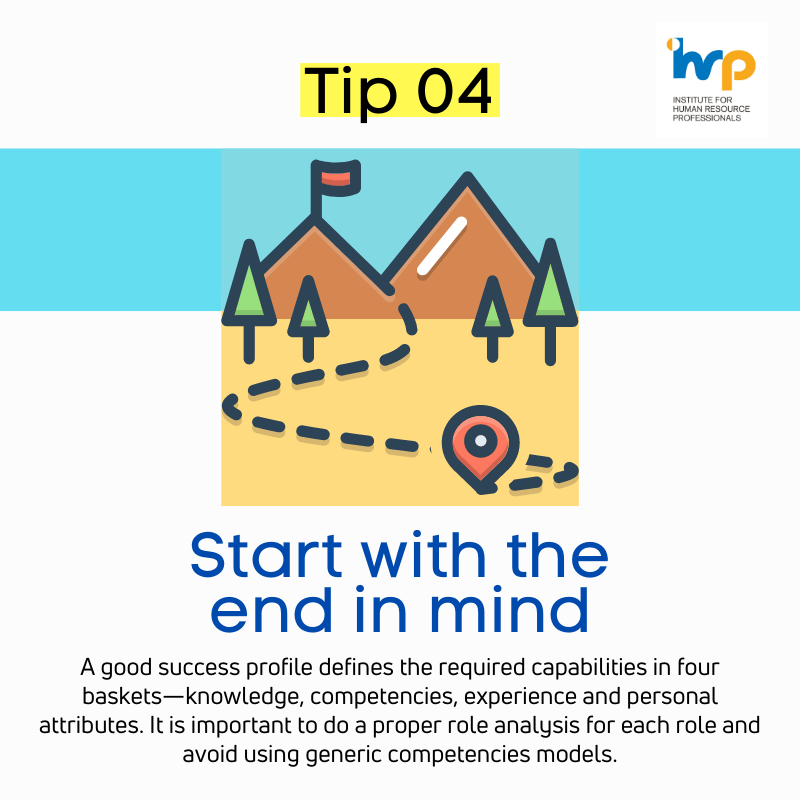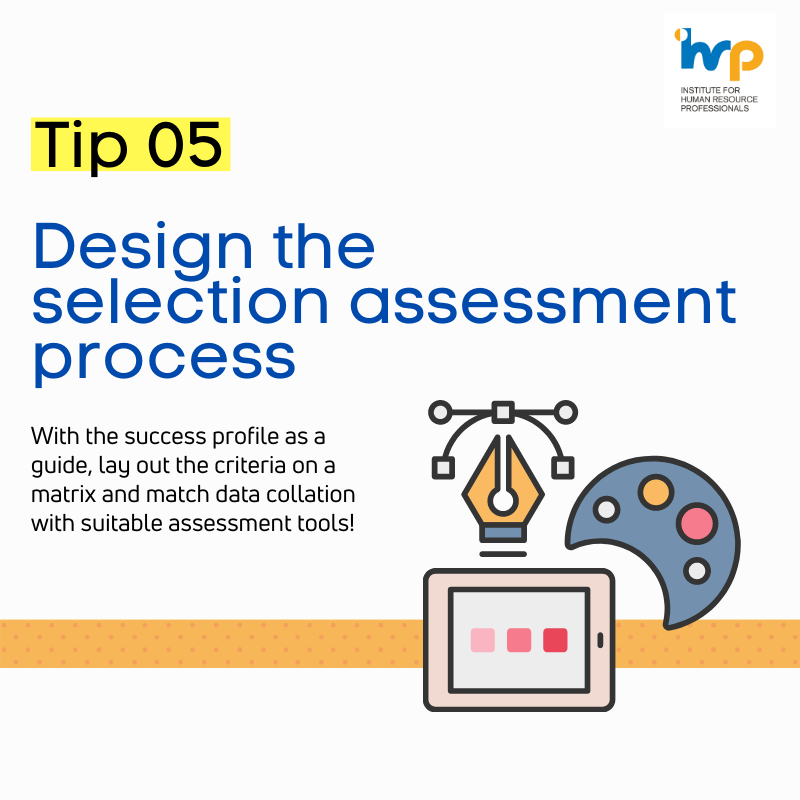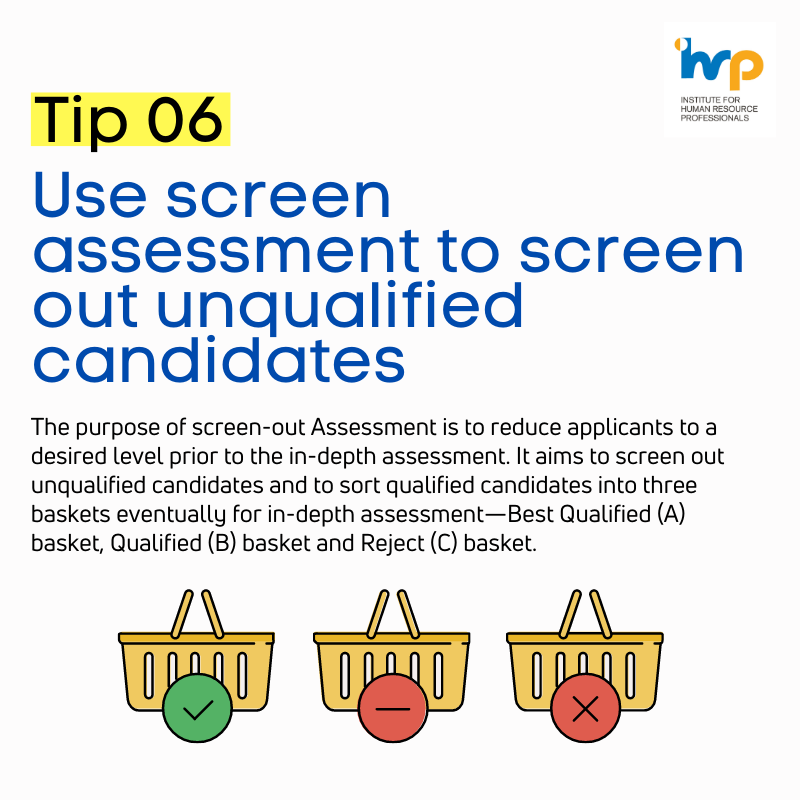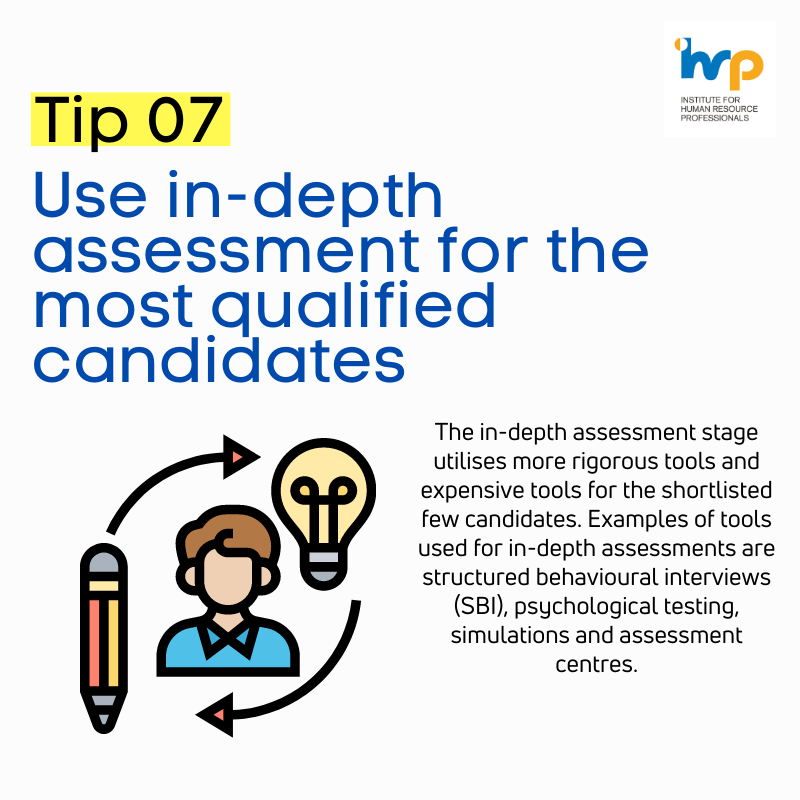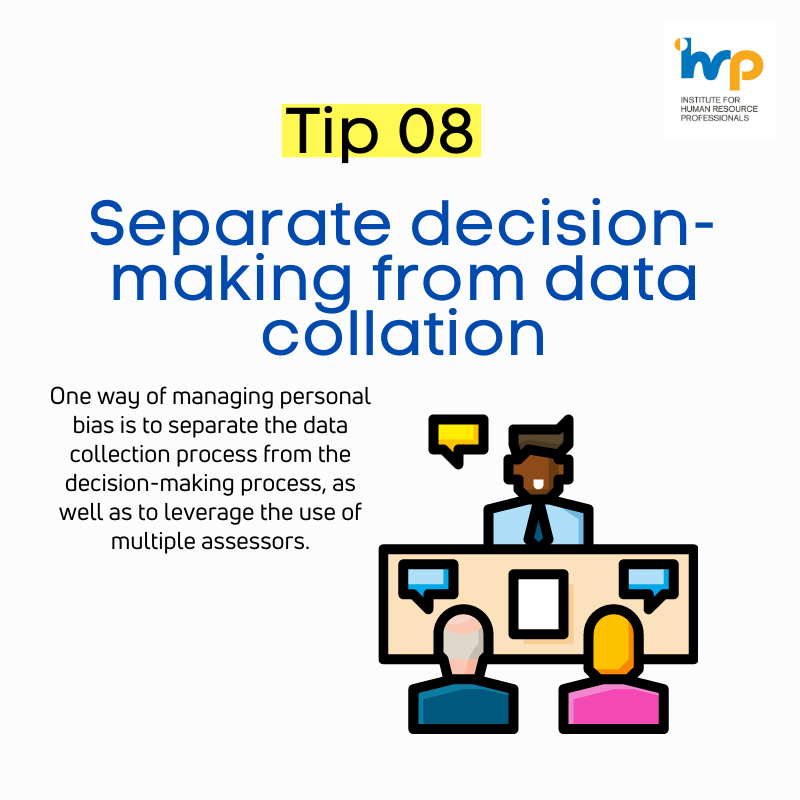Designing a Cost-Effective Talent Assessment Process
By Steven Lau | Global Head, Talent & OD, Comfortdelgro Corporation Limited
One of the key objectives of talent selection is to hire talent accurately. How confident are you of selection decisions you have made in the past? Have you sometimes wondered if the person you are about to hire is the right candidate? Or worse—you have hired the wrong person and wonder why?
This can happen if your selection assessment process is oriented toward cost and time efficiency to the detriment of other selection process objectives, such as the need for accuracy.
Given that people do lie and that some qualified candidates may not know how to share good information about themselves, combined with time-pressed untrained hiring personnel; the road to proper selection assessment is filled with pot-holes—from personal bias to process bias and tools bias. Talent selection becomes a shot in the dark that is based more on guesswork than science. As the cost of poor selection can range from 5.8 percent to 213 percent of a position’s annual compensation, this is a regrettable and expensive mistake, particularly for senior or executive levels .
The purpose of this article is to share some tips on how to improve our selection assessment process and hence effectiveness.
Tip 1: Have a LEAN Assessment System
Designing the talent assessment process to be cost-effective means having a LEAN (Legally defensible, Efficient, Accurate and Nondiscriminatory (fair)) system. A LEAN system goes beyond cost considerations to optimise selection assessment goals, processes and tools to maximise business outcomes.
Tip 2: Train people in assessment
Many recruiters and hiring managers do not have training in selection assessment and rely more on their experience from past practices resulting in the selection system bias— personal, process and tools bias. Training people in talent assessment will reduce bias by reducing guesswork and increasing the validity and science of the process.
Tip 3: Have a LEAN selection process for each role
Do you use the same process for all roles subconsciously? Filling in bodies is not the same as filling talent. Talent assessment is therefore not about using the cheapest and fastest assessment methods but a balance of the numerous LEAN factors. A good system starts with the understanding that quality talent decisions can only come from a quality assessment process. If the assessment process is flawed, the selection outcome will be flawed as well.
Every role should have a well-thought-through assessment process—a process that describes the assessment process flow, the different assessments tools to be used and the roles of people in the selection process. If the process happens to be the same for different roles, it should be due to coincidence rather than convenience.
A good LEAN process takes the following into consideration:
- Ensure an objective process: Assess every candidate the same regardless of familiarity or prior knowledge of them. All candidates go through the same objective process.
- Good candidate experience: A good process should also provide the applicants with a good and positive experience. This is important because this relaxes the candidates which increases information sharing and the chances of acceptance if offered (For example, interview, not interrogate).
- Project a positive image for the company: There should be proper relationships handling by hiring staff, who are also ambassadors of the company. Candidates are also your customers of the company services.
- Buy-in: Involve and engage all recruiters and hiring managers in the whole process from role analysis to decision making.
- Reduce bias: Separate data collation from decision-making/judgment.
- Choose tools: Leverage tools cost-effectively and correctly. Consider using cheaper methods at the beginning of the process to screen applicants, and more expensive methods at the later stage for in-depth assessment.
- Legality: Respect legal requirements.
- Ensure valid and accurate information.
Tip 4: Start with the end in mind
Many jump into selection assessment without first defining the performance outcomes and capabilities needed.
The first thing to do is to review and look into the future of what performance is expected of the role and the context in which the role needs to be successful in. This can be done through a role analysis exercise that both defines the role expectations and the capabilities needed to be successful. A clear outcome of this exercise is the success profile for the role.
A good success profile defines the required capabilities in four baskets—knowledge, competencies, experience and personal attributes. It is important to do a proper role analysis for each role and avoid using generic competencies models.
All roles exist within a job context. It is important, as part of the personal attributes required, to define the motivational requirements so as to be able to assess for job, location and culture fit as well.
Tip 5: Design the selection assessment process
Largely, the assessment process is made up of three major stages—screening assessment, indepth assessment and decision-making.
With the success profile as a guide, lay out the criteria on a matrix and match data collation with suitable assessment tools.
A good assessment process aims to cut down the quantity of applicants systematically to a predetermined number for further in-depth assessment through a funneling process. If it is determined to have three shortlisted candidates for the final interview, the selection funnel determines the number of candidates to be shortlisted at each earlier stage of the assessment process.
Tip 6: Use screen assessment to screen out unqualified candidates
A LEAN selection assessment design leverages assessment tools in a cost-effective manner by using cheaper and lower fidelity tools earlier in the assessment process.
The purpose of screen-out assessment is to reduce the number of applicants to a desired level prior to the in-depth assessment. It aims to screen out unqualified candidates and to sort qualified candidates into three baskets eventually for in-depth assessment—Best Qualified (A) basket, Qualified (B) basket and Reject (C) basket.
Resume screen (Personal or Automated)
This is where you try to reduce the number of applicants to a predetermined number by eliminating the unqualified followed by the least qualified. The resume screener needs to be adequately trained or you will have the GIGO (Garbage in- Garbage out) effect. This can happen when candidates are wrongly rejected or wrongly selected into the pool for the next stage of assessment.
For example, be careful not to screen out salary expectations too quickly; with the current employment situation, some are willing to be more flexible with their expectations. Also do not judge too soon on items such as past job titles, age and employment gaps. Instead, focus on the qualification criteria per the four selection quadrant in the success profile (See Tip 4). If you are using an automated Screening system, check that the system does not contain bias that screen out wrongly.
Test Screen
The next screen could be the use of tests. Tests can be a low-cost way to weed out unqualified/least qualified applicants efficiently.
Skills and knowledge tests may be administered if you need to ensure that shortlisted candidates have the required skills/knowledge for the job. Such tests may be on critical technical knowledge, specific software skills, language proficiency skills, customer service skills, etc.
There are also tests that assess cognitive ability and aptitude. Examples of ability tests are verbal reasoning, numerical reasoning and abstract reasoning tests.
When using tests, it is important to ensure that the test is suitable for use in the specific situation, free of bias and is valid for use. Test are usually used for screening out rather than screening in candidates.
Phone Screen
A structured phone screen is usually a short 20- 30 minute conversation to verify important missing information. It is not to interview the candidate per se but more to ensure that the short-listed candidate has the required qualifications to go for further in-depth assessments.
The phone screen is a good second level assessment to further cut down candidates from your A or B basket. Again, it is important to ensure your screeners are appropriately trained.
Tip 7: Use in-depth assessment for the most qualified candidates
The in-depth assessment stage utilises more rigorous and expensive tools for the shortlisted few candidates. Examples of tools used for indepth assessments are structured behavioural interviews (SBI), psychological testing, simulations and assessment centres.
Psychological test
These are used to understand the motivational, culture and job fit of the candidates. They help surface the personal motivation driver and the working style match of the candidates. They can also provide information on the enablers and derailers of performance.
Personality inventories—work styles fit, team fit, motivation—these are usually used as a “fisher” for further in-depth interviews/assessments. Be sure to use high fidelity grade inventories (selection grade) and avoid inventories used for training (training grade).
Ensure that test used is valid for the assessment of the role. Also interpret these inventories through trained people to avoid mis-interpreting the data. Usually, there is no right or wrong personality. The objective is to know the behavioural implications for the role and this data must be read in conjunction with other information. Some instruments such as the 16PF allows you to do a role analysis prior to use.
Interviews
There are different variations of interviews. The typical interview is the unstructured interview. Such a method is more of a chemistry check rather than a valid data collation tool. The unstructured interview is an expensive and ineffective tool as it has a low reliability (0.2).
An alternative and more valid approach is to use a SBI. A trained SBI person has skills in deriving reliable information through the behavioural interviewing method.
Tip 8: Separate decision-making from data collation
To reduce personal bias, it is also useful to use multiple interviewers. Using multiple trained interviewers to gather different data with some deliberate overlap helps ensure important information is collated and reduces personal bias. Avoid the use of panel interviews. Although it saves time for the interviewee, it is not a good use of time for the interviewers due to the duplication of the interviewers’ roles. For the same time invested, each interviewer could have collected different data and collectively allowing richer and deeper insights into the candidate.
Behavioural simulations and assessment centres
Among the most valid tools for in-depth assessments are simulations and assessment centres (ACs). These tools are much more expensive in terms of cost and time as compared to the screening tools above. They are, however, among the most valid tools for assessment and are used for the shortlisted few candidates to assess for critical and hard-to-gather competencies. Such competencies could be on criteria such as the amount of personal impact, level of energy, strategic decision-making skills, complex planning skills, customer interaction skills, time management skills and leadership style.
Make sure the simulations/ ACs are valid for the role and assessors are qualified to run the assessment process.
One of the biggest sources of bias in assessment is personal bias. One way of managing personal bias is to separate the data collection process from the decision-making process, as well as to leverage the use of multiple assessors.
To separate data collation from decision-making, you should have clear decision points identified in your selection process and consciously ensure that premature judgment and decisions are not made during data gathering prior to predetermined decision points.
Another way to minimise personal bias is to get recruiters and hiring managers to calibrate their assessment in a structured manner before making the final job offer decision. Involving multiple hiring managers also increases buy-in to the decision for the candidates when selected.
In conclusion, adopting a LEAN system brings a deliberate process-centric approach that will increase your organisation’s chances of getting the hiring decision right first time.
About the Author
Steven Lau is a passionate and experienced expert in human capital management and performance improvement. He consults and coaches in areas related to improving leadership performance and agility and talent management.
His rich experience includes both in-house and consulting roles as well as operational roles. He works extensively within Asia and has lived in cities such as Singapore, Taipei, Shanghai, Tokyo, Beijing and Guangzhou.
His previous roles include being head of learning in corporations, head of consulting firms and senior leader for group human resources.
In the last 20 years, he has provided consulting expertise to about a hundred companies and has delivered hundreds of assignments in areas such as strategic workforce planning, strategic directions and culture alignment, talent management system design, competency framework development, talent assessment, selection system design and strategic management.
Steven is a CPT, Graduate Coach, CCUI, Certified Test User, BPS as well as being certified in various assessment tools such as the MBTI, COI and have used the Hogans, Big 5 and many other psychometric inventories. He is also a previous Master Trainer in DDI Leadership, Selection and Management programs.



